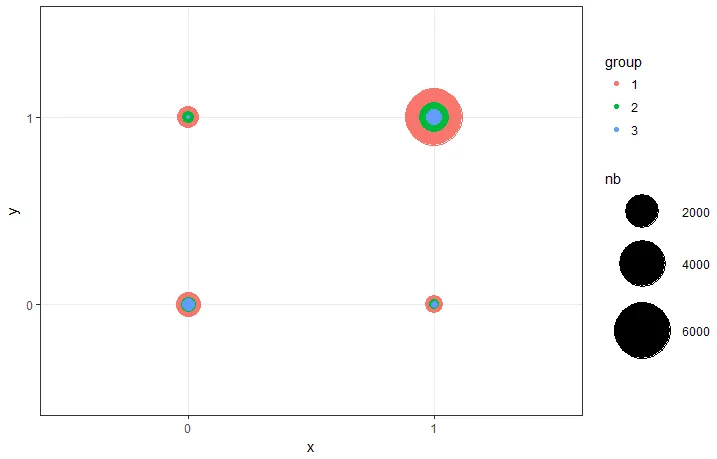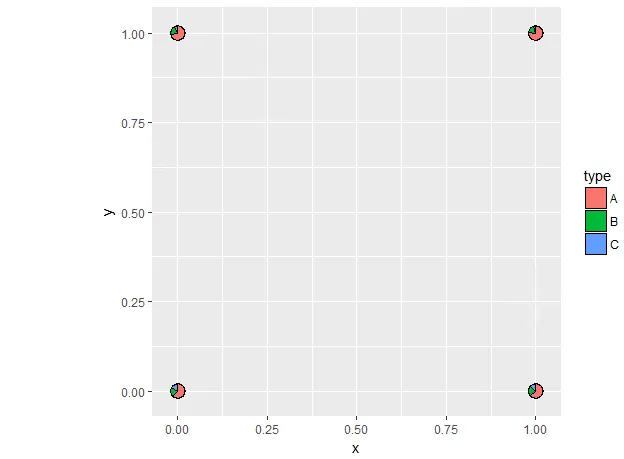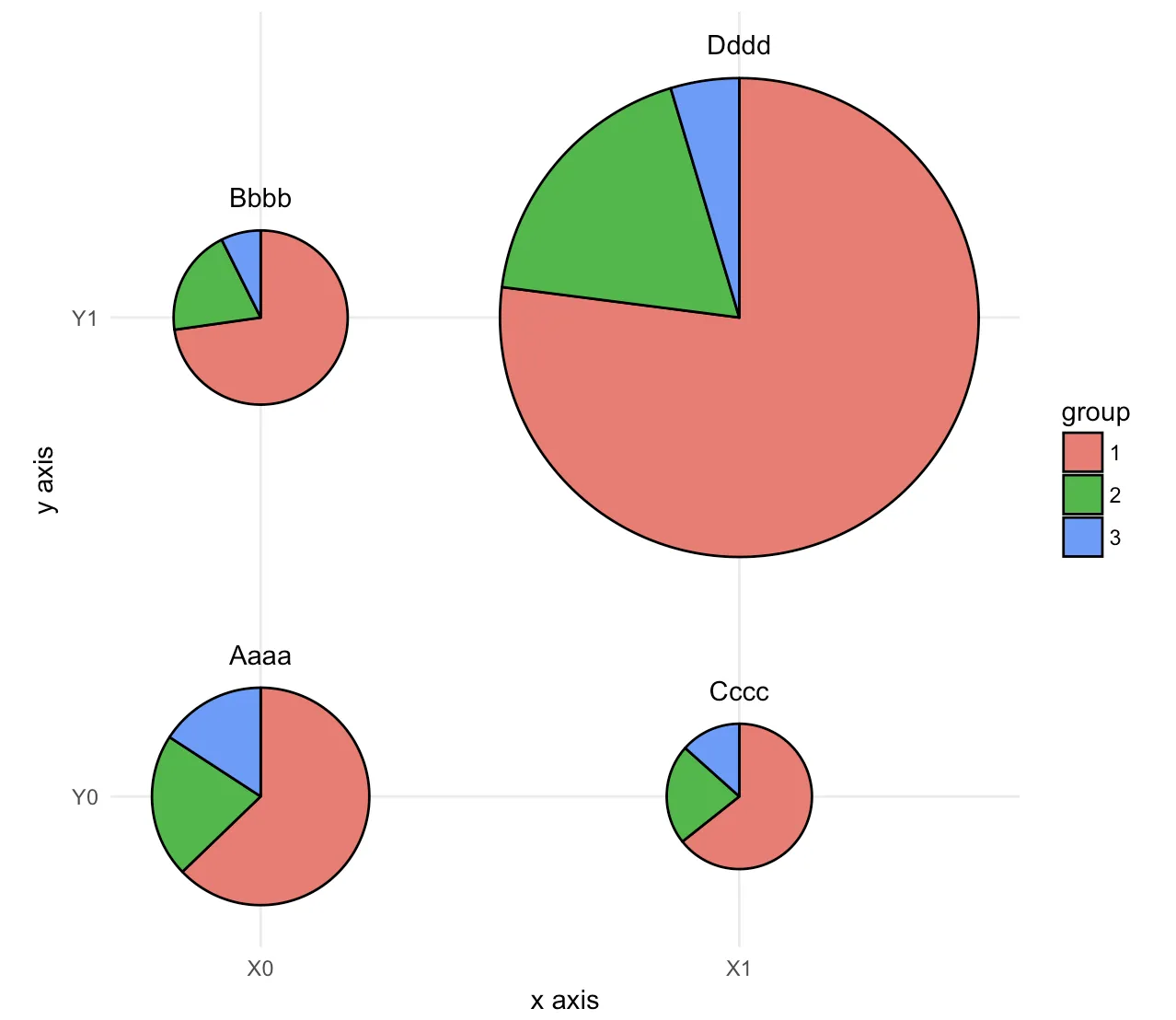我有一个数据框,其中包含以下数据:
> data_graph
# A tibble: 12 x 4
# Groups: ATTPRO, ATTMAR [?]
x y group nb
<dbl> <dbl> <chr> <int>
1 0 0 1 1060
2 0 0 2 361
3 0 0 3 267
4 0 1 1 788
5 0 1 2 215
6 0 1 3 80
7 1 0 1 485
8 1 0 2 168
9 1 0 3 101
10 1 1 1 6306
11 1 1 2 1501
12 1 1 3 379
我的目标是有以下图表:
- 将定性变量x和y放在X/Y轴上
- nb表示饼图大小的定量变量
- group表示饼图部分的定性变量
使用ggplot2包最接近这个目标的结果只能给我气泡图,使用以下代码。我找不到在其中放置饼图的解决方案:
library(ggplot2)
ggplot(data_graph, aes(y = factor(y),x = factor(x))) +
geom_point(aes(colour = group, size = nb)) +
theme_bw() +
cale_size(range = c(1, 20)) +
labs(x = "x", y = "y", color = "group", size = "nb")
使用scatterpie包并没有太大帮助。这次饼图画得很好,但我找不到一种方法来使用nb定义饼图大小。此外,x和y被视为定量变量(我尝试了factor()没有任何机会),而不是定性变量。结果非常丑陋,没有完整的图例。
> tmp
x y A B C
1 0 0 1060 361 267
2 0 1 788 215 80
3 1 0 485 168 101
4 1 1 6306 1501 379
library(scatterpie)
ggplot() +
geom_scatterpie(aes(x = x, y = y), data = tmp, cols = c("A", "B", "C")) +
coord_fixed()
如何修改这段代码,让第一个图表的样式和第二个的饼状图一致呢?



dput()的输出,这样我们就可以将其直接复制到代码中并直接重新创建数据框。 - Claus Wilke